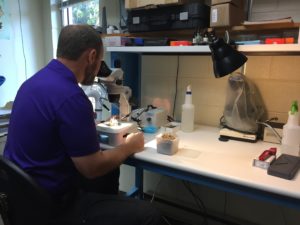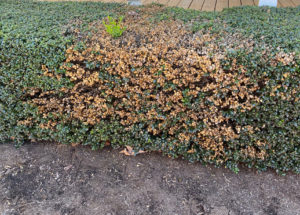Pest Alert – Volutella Blight on Boxwoods
go.ncsu.edu/readext?672963
en Español / em Português
El inglés es el idioma de control de esta página. En la medida en que haya algún conflicto entre la traducción al inglés y la traducción, el inglés prevalece.
Al hacer clic en el enlace de traducción se activa un servicio de traducción gratuito para convertir la página al español. Al igual que con cualquier traducción por Internet, la conversión no es sensible al contexto y puede que no traduzca el texto en su significado original. NC State Extension no garantiza la exactitud del texto traducido. Por favor, tenga en cuenta que algunas aplicaciones y/o servicios pueden no funcionar como se espera cuando se traducen.
Português
Inglês é o idioma de controle desta página. Na medida que haja algum conflito entre o texto original em Inglês e a tradução, o Inglês prevalece.
Ao clicar no link de tradução, um serviço gratuito de tradução será ativado para converter a página para o Português. Como em qualquer tradução pela internet, a conversão não é sensivel ao contexto e pode não ocorrer a tradução para o significado orginal. O serviço de Extensão da Carolina do Norte (NC State Extension) não garante a exatidão do texto traduzido. Por favor, observe que algumas funções ou serviços podem não funcionar como esperado após a tradução.
English
English is the controlling language of this page. To the extent there is any conflict between the English text and the translation, English controls.
Clicking on the translation link activates a free translation service to convert the page to Spanish. As with any Internet translation, the conversion is not context-sensitive and may not translate the text to its original meaning. NC State Extension does not guarantee the accuracy of the translated text. Please note that some applications and/or services may not function as expected when translated.
Collapse ▲ In our Henderson County Plant Clinic we diagnose plant problems for gardeners, landscapers, and farmers. We get live samples as well as digital samples via email. Recently, we received some images of sick boxwoods to diagnose.
In our Henderson County Plant Clinic we diagnose plant problems for gardeners, landscapers, and farmers. We get live samples as well as digital samples via email. Recently, we received some images of sick boxwoods to diagnose.
Luckily for the client, the disease is Volutella Blight which is a fungus that slowly kills boxwood. This is much better than BOXWOOD BLIGHT, which kills plants in less than a week!
In this case we suggested the gardener should prune out the dead branches, then fertilize to encourage the branches of the other plants to fill in the gaps. If the damage is extensive then they may even have to cut out the dead plant.
One of the things that is causing with the problems with these boxwoods is the intense hedging/pruning year after year. When you shear plants back to the same height year after year, plants get weak. The new growth each year is where the plant gets most of its food from photosynthesis; you can’t prune plants that tight year after year without affecting the health of the plants. Plants need their new leaves. We suggested not pruning these for a while to let the plants put on some new healthy growth.
Copper-based fungicides are good at protecting the plants that are not already affected but will not cure the affected branches and plants that are dying.
If you have sick plants, you can email Horticulture Agent Steve Pettis your plant problem pictures to steve_pettis@ncsu.edu and he will let you know what is wrong with your plant if he can.





